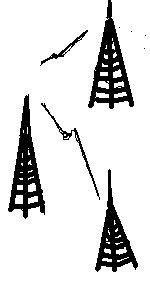Cyberspace. Is it Safe ?
 Online access has become a
Online access has become a  part of everyday life and individuals’s private data is being stored all over the world at different institutions. Be the account a professional networking, social networking, department stores, or a bank or credit card beauro, the unsuspecting individuals run the risk of their information stolen. This breach of information most usually happens in three ways. The information is stolen from the institutional databases by the hackers breaking into the computer system of the institution. Another way is when the password of an individual user is hacked at the institution where the acc
part of everyday life and individuals’s private data is being stored all over the world at different institutions. Be the account a professional networking, social networking, department stores, or a bank or credit card beauro, the unsuspecting individuals run the risk of their information stolen. This breach of information most usually happens in three ways. The information is stolen from the institutional databases by the hackers breaking into the computer system of the institution. Another way is when the password of an individual user is hacked at the institution where the acc ount is located. It can also occur at   the users’ computer in few different ways snooping it. Once in wrong hands it can create problems of unimaginable proportions for them. Well, you never can guarantee a system to be one hundred percent safe but a reasonable safety of this information has to be part of the total solution or else eCommerce will not flourish.
ount is located. It can also occur at   the users’ computer in few different ways snooping it. Once in wrong hands it can create problems of unimaginable proportions for them. Well, you never can guarantee a system to be one hundred percent safe but a reasonable safety of this information has to be part of the total solution or else eCommerce will not flourish.
A recent determination that an eight letters password is not sufficiently safe. Given the current technology of GPGPU , ( general purpose graphic processing unit ) it is not difficult for the hackers to try to decypher eight digits passwords. A twelve digit password is now recommended for better security. Use of special characters (#@$%^&…..) in password, if possible, is highly recommended.
This arcane information protection and personal identification methodology has not changed since the introduction of multiuser mainframe computers. Each individual user was given a separate  account on it and the control over the degree of privacy of the data (s)he wanted to maintain by using a string of characters and numbers called password. The current identification technology has moved way beyond that. Finger Prints Scan and Match Detection and Iris Scan Technology is the state of the art now. It is surprising that it has not found its way into the mainstream of personal communication and personal assistive devices.
account on it and the control over the degree of privacy of the data (s)he wanted to maintain by using a string of characters and numbers called password. The current identification technology has moved way beyond that. Finger Prints Scan and Match Detection and Iris Scan Technology is the state of the art now. It is surprising that it has not found its way into the mainstream of personal communication and personal assistive devices.
As cloud applications move closer and closer to fulfiling more and more everyday needs of the users and more users start using the cloud services, the need for information security will become even more pronounced. A cloud infrastructure must be trust worthy for secured communications and transactions. This arcane mechanism of password based identification authentication has to give way to the new technology. Well, that has been slowly happening, as the netbooks from the major manufacturers are making their debut with finger print scanners. Yes, they all had their share of issues making it work seemlesly on the netbook products but it will be mainstream as those issues get squared away and the price becomes further affordable.
Intel Corporation recently made a major move into the cyber security space by acquiring McAfee. “The cyber threat landscape has changed dramatically over the past few years with millions of new threats appearing every month†said Dave DeWalt, McAfee chief executive.
AndIThoughT© …….. What the next big thing going to be in the market place ? A Tablet with a finger print scanner ? A handheld communication device with a ratinal scanner built in ? AndIWondeR© …….. Who from ?  :-)  and what would it be called.
![]()








